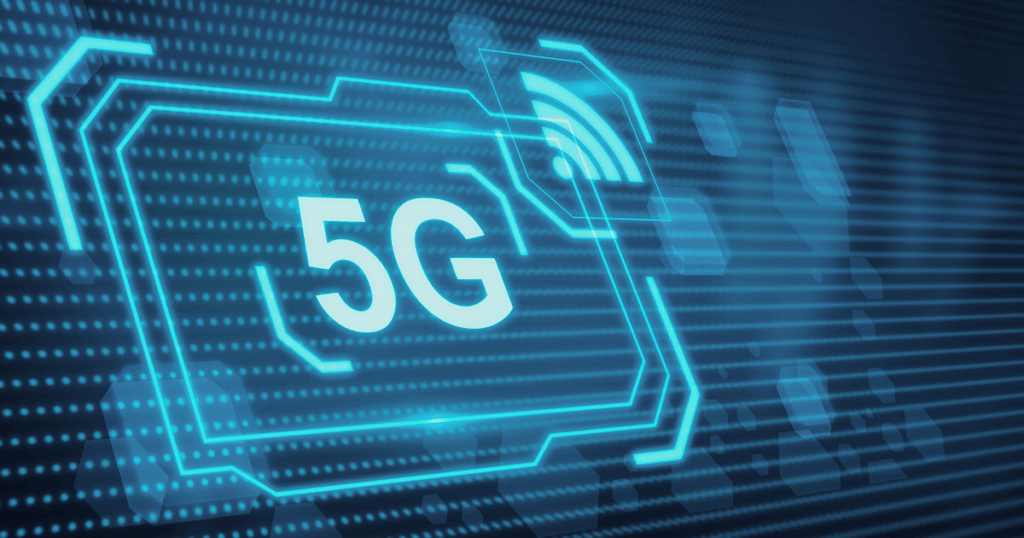Anúncios
The rollout of 5G technology is reshaping industries worldwide, and its implications for IoT and smart cities are nothing short of transformative.
As connectivity speeds accelerate and latency decreases, the fusion of 5G with IoT devices is unlocking opportunities previously thought impossible.
Anúncios
From enhancing urban infrastructure to enabling real-time data sharing, this technology is laying the foundation for smarter, more efficient cities.
But what does this truly mean for the future of urban development? How will 5G optimize IoT performance to improve transportation, energy management, and public safety? And most importantly, what challenges and opportunities arise from integrating these advancements into our daily lives?
Anúncios
This exploration dives into the real-world impact of 5G on IoT and its critical role in shaping the smart cities of tomorrow.
By analyzing its potential, challenges, and real-life applications, we’ll uncover how this cutting-edge technology is driving innovation and reshaping the modern urban experience.
The Role of 5G in Revolutionizing IoT Connectivity
The advent of 5G technology has marked a pivotal moment in the evolution of IoT (Internet of Things). While IoT has been around for years, its full potential has often been restricted by the limitations of current network infrastructures. Enter 5G, a technology designed to overcome these barriers and provide the speed, bandwidth, and low latency necessary for a truly connected world.
One of the most transformative aspects of 5G in IoT is its ability to handle significantly more connected devices simultaneously. Traditional networks often struggle under the load of numerous connections, leading to delays and disruptions.
However, 5G can support up to one million devices per square kilometer, a game-changer for IoT in urban environments and industrial settings. This opens the door to seamless communication between a vast number of devices, from smart appliances in homes to sensors in factories.
Additionally, 5G drastically reduces latency, the delay in data transmission between devices. This is crucial for applications that require real-time responsiveness, such as autonomous vehicles, remote healthcare, and smart infrastructure.
For example, self-driving cars rely on split-second decision-making, and the low latency of 5G ensures that these vehicles can communicate with traffic signals, other cars, and even pedestrians without delay.
Beyond speed and capacity, 5G also improves energy efficiency for IoT devices. Its advanced infrastructure requires less power for data transmission, which can extend the battery life of devices like sensors and wearables. This is particularly beneficial for remote areas where devices are harder to access for maintenance.
In essence, 5G doesn’t just improve IoT—it enables its evolution. By addressing the limitations of current networks, it provides the foundation for more sophisticated, interconnected systems that can transform industries and daily life.
Smart Cities: How 5G Shapes Urban Development
Smart cities represent a bold vision for the future, and 5G serves as the backbone for making this vision a reality. By facilitating faster, more reliable communication between devices and systems, 5G enables cities to operate more efficiently and sustainably while enhancing the quality of life for residents.
One key area where 5G impacts smart cities is in traffic management. Using real-time data collected from IoT devices like traffic cameras and sensors, cities can optimize traffic flow, reduce congestion, and improve public transportation systems.
For example, dynamic traffic lights powered by 5G can adjust their timing based on current traffic patterns, ensuring smoother commutes for drivers and pedestrians alike.
Energy management is another critical aspect of smart city development, and 5G plays a pivotal role here as well. By connecting smart grids and energy-efficient systems, cities can monitor and optimize energy usage in real time. This not only reduces energy waste but also lowers costs for both municipalities and residents.
Imagine a world where streetlights dim automatically when no one is around or where buildings self-regulate their energy consumption based on occupancy levels.
Public safety is yet another area that benefits greatly from 5G. Enhanced connectivity allows for quicker response times in emergencies, as first responders can access real-time information from connected devices. Surveillance systems can also be improved, with high-definition cameras streaming live footage over 5G networks to provide better situational awareness.
Ultimately, 5G empowers cities to become smarter, safer, and more sustainable. By enabling seamless communication between countless interconnected systems, it lays the groundwork for urban environments that are not just more efficient but also more humane and inclusive.
Transforming Industries with 5G-Enabled IoT
The industrial sector is poised to undergo a massive transformation with the integration of 5G and IoT. Together, these technologies enable smarter factories, streamlined operations, and enhanced productivity, heralding a new era for manufacturing and logistics.
One of the most significant impacts of 5G on industry is the advent of smart manufacturing, or Industry 4.0. In this new paradigm, factories are equipped with IoT devices such as sensors, cameras, and robots, all connected via 5G networks.
These devices collect and transmit data in real time, allowing manufacturers to monitor operations, identify inefficiencies, and predict equipment failures before they occur. This level of insight not only improves productivity but also reduces downtime and maintenance costs.
Logistics and supply chain management also benefit immensely from 5G. With real-time tracking enabled by IoT devices, companies can monitor the location and condition of goods at every stage of the supply chain. This ensures greater transparency and helps businesses respond more quickly to disruptions, such as delays or damaged shipments. Furthermore, autonomous vehicles and drones powered by 5G can revolutionize last-mile delivery, making it faster and more reliable.
Worker safety is another area where 5G-enabled IoT shines. Wearable devices can monitor vital signs and environmental conditions, alerting workers and supervisors to potential hazards. In high-risk industries such as construction or mining, this can be life-saving.
The integration of 5G and IoT in industrial settings doesn’t just improve operational efficiency—it redefines what’s possible. By creating smarter, safer, and more responsive systems, these technologies drive innovation and growth across industries.
Addressing Challenges and Ethical Considerations
While the potential of 5G and IoT is undeniable, it’s essential to address the challenges and ethical considerations that come with their widespread adoption. From cybersecurity to data privacy, these issues must be carefully managed to ensure that technological progress benefits everyone.
Cybersecurity is one of the most pressing concerns. With millions of devices connected via 5G networks, the risk of cyberattacks increases significantly. Hackers could potentially exploit vulnerabilities in IoT devices to access sensitive information or disrupt critical systems. To mitigate these risks, it’s crucial to implement robust security measures, such as encryption and regular software updates.
Additionally, governments and organizations must collaborate to establish comprehensive cybersecurity standards for 5G-enabled IoT systems.
Data privacy is another critical issue. As IoT devices collect vast amounts of data, questions arise about who owns this data and how it’s used. For example, smart city initiatives often involve the collection of personal information, such as location data and behavioral patterns. It’s essential to ensure that this data is used responsibly and transparently, with clear guidelines for consent and data-sharing practices.
Ethical considerations also come into play when discussing the societal impact of 5G and IoT. While these technologies have the potential to improve lives, they could also exacerbate existing inequalities if access is limited to certain groups. Bridging the digital divide and ensuring equitable access to 5G infrastructure must be a priority for governments and organizations.
Finally, there’s the question of sustainability. While 5G enables energy-efficient systems, the infrastructure itself requires significant resources to build and maintain. Finding ways to minimize the environmental impact of 5G deployment is crucial for long-term sustainability.
By addressing these challenges and ethical considerations, we can harness the power of 5G and IoT responsibly, ensuring that their benefits are shared widely and equitably.
The Future of 5G and IoT: What Lies Ahead?
As we look to the future, the possibilities for 5G and IoT seem almost limitless. These technologies have already begun to transform industries and cities, but their potential extends far beyond what we’ve seen so far.
One exciting area of development is healthcare. With 5G-enabled IoT, remote patient monitoring, telemedicine, and even robotic surgeries become more viable. Imagine a world where doctors can perform life-saving procedures from miles away, or where patients with chronic conditions can be monitored continuously from the comfort of their homes.
The agricultural sector also stands to benefit from these advancements. Precision farming, enabled by IoT sensors and drones, allows farmers to monitor soil conditions, weather patterns, and crop health in real time. This not only increases efficiency but also reduces waste and promotes sustainable farming practices.
Looking further ahead, the integration of 5G with emerging technologies like artificial intelligence (AI) and blockchain promises to unlock even more possibilities. For example, AI-powered IoT devices could analyze data in real time to make smarter decisions, while blockchain could provide secure, transparent ways to manage data and transactions in a 5G-enabled ecosystem.
Of course, realizing this future will require continued investment in infrastructure, innovation, and collaboration. Governments, businesses, and individuals all have a role to play in ensuring that the benefits of 5G and IoT are accessible to all.
In many ways, the journey of 5G and IoT is just beginning. By embracing these technologies and addressing the challenges they present, we can unlock a future that’s not only more connected but also more compassionate and inclusive.

Conclusion: Unlocking the Future with 5G and IoT
In conclusion, the transformative potential of 5G in reshaping IoT and smart city development cannot be overstated. By addressing long-standing challenges such as latency, bandwidth limitations, and energy inefficiency, 5G provides the foundation for a seamlessly connected world.
This revolutionary technology enables the widespread adoption of IoT across industries, from healthcare and agriculture to manufacturing and logistics, driving innovation and efficiency on an unprecedented scale.
Moreover, 5G’s role in smart cities is truly groundbreaking. By facilitating real-time data sharing and connectivity, urban centers can optimize traffic management, enhance energy efficiency, and improve public safety. These advancements not only contribute to sustainability but also elevate the overall quality of life for city residents.
Additionally, the low latency and high capacity of 5G make critical applications like autonomous vehicles, remote healthcare, and emergency response faster and more reliable than ever before.
Nevertheless, the journey toward a fully connected future is not without its challenges. Addressing cybersecurity threats, data privacy concerns, and the digital divide is crucial to ensuring that the benefits of 5G and IoT are equitable and sustainable. By embracing ethical practices and collaborative innovation, we can unlock the true potential of these technologies.
The fusion of 5G and IoT represents more than just technological progress—it’s a catalyst for a more interconnected, efficient, and inclusive future.






